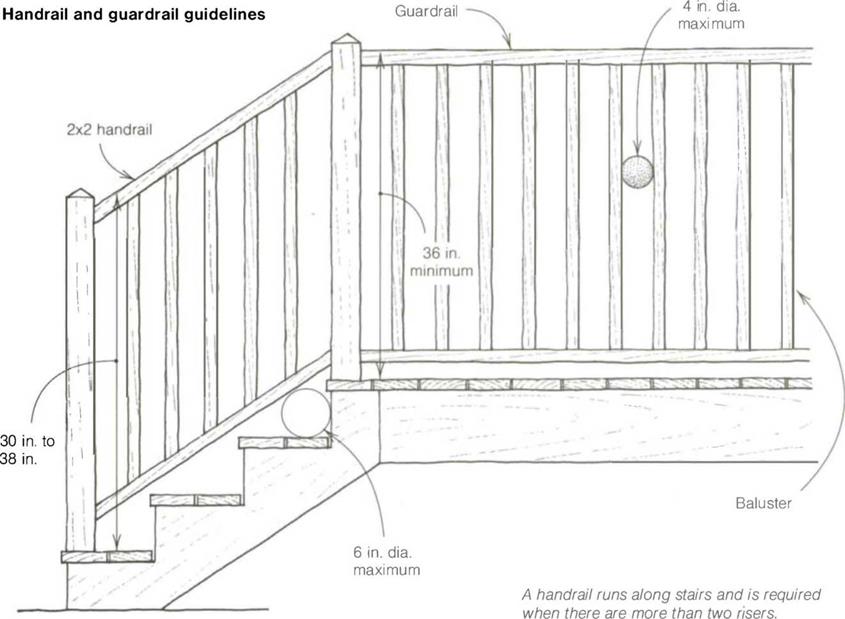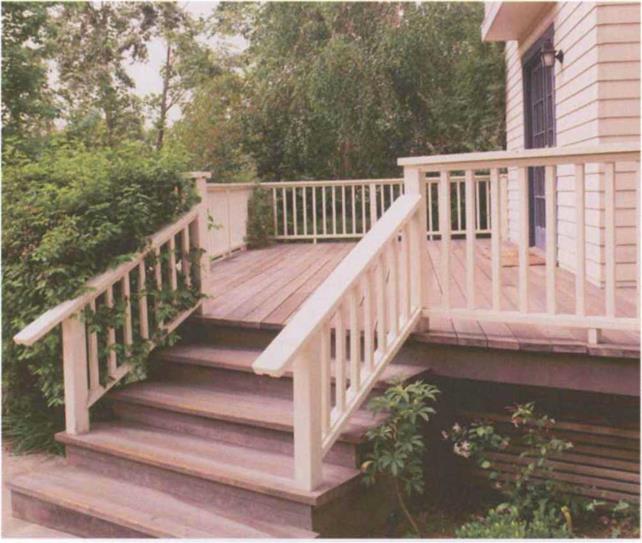Construction Considerations for Soil Nailed Walls
The construction sequence is typically to excavate, nail, and shotcrete the face in increments from the top down. Figure 8.56 shows a schematic of a sequence for underpass widening. Where face stability is a concern, a flashcoat of shotcrete may be applied before nail installation. The most common method of nail installation in
FIGURE 8.56 Construction sequence for soil nailed wall used in widening of underpass. (From Oregon Department of Transportation, with permission)
|
all nail layers |
STEP 7: Place second structural application to full height and architectural finish
FIGURE 8.56 (Continued)
Europe, as in the United States, is the drill-and-grout method. Most commonly, the steel tendon is installed prior to grouting, although this sequence is sometimes reversed. In France, however, very significant use is also made of driven nails without grouting. Other specialty techniques for installing nails include jet grout nailing (France), driven nails with an oversize head and subsequent grouting of the annulus (Germany), and compressed-air explosive injection of nails (United Kingdom).
Small hydraulic, track-mounted drill rigs of the rotary-percussive type are most commonly used to install nails. These rigs can work in relatively confined surroundings and are therefore compatible with many of the constraints associated with crowded urban
environments. Open-hole drilling methods are predominant, with cased-hole methods used in particularly difficult ground conditions. The most common grouting method used with open-hole drilling is the low-pressure tremie method. Where extensive use of casing is required, alternative methods of construction are often more cost-competitive.
Steel tendons typically used for drill-and-grout soil nails usually consist of /4- to 2-indiameter (20- to 50-mm) bars with a yield strength in the range of 60 to 70 kips/in2 (420 to 500 N/mm2). These steels exhibit ductile behavior under bending action. The driven nails used commonly in France are typically steel angle sections, which show better ability to deal with subsurface obstructions such as cobbles and small boulders than do circular steel sections.
Drainage is a critical aspect of soil nail wall construction. Face drainage is virtually always used with permanent walls, and very commonly used with temporary walls. Face drainage usually consists of synthetic drainage elements placed between the shotcrete and the retained soil, and may be typically 8- to 12-in-wide (200- to 300-mm) synthetic strips or perforated pipes. Depending on the site groundwater conditions, face drainage may be supplemented with weep holes through the facing and longer horizontal perforated drain pipes. Control of surface water is also an important element of the drainage system.
Temporary soil nail wall facings generally consist of shotcrete 3 to 4 in (80 to 100 mm) thick and a single layer of wire mesh. Permanent shotcrete walls 6 to 10 in (150 to 250 mm) thick are very common in Germany, and these walls typically include a second layer of wire mesh. For architectural reasons, permanent walls of precast panels and cast-inplace concrete are also commonly used in France and Germany.
Testing and monitoring during construction are an important aspect of soil nail wall construction in Europe. Nail bond testing is almost universally performed, to confirm the assumptions made during design or to enable redesign in the event that the design assumptions cannot be realized. For relatively homogeneous sites, typically 3 to 5 percent of the nails will be tested, depending on the size of the job. Testing is also undertaken whenever changed geologic or construction conditions occur. Wall performance monitoring usually consists of measuring horizontal wall movements during construction. Some contractors make more use of inclinometers for displacement monitoring. Maximum horizontal displacements are typically in the range of 0.1 to 0.3 percent of the height of the wall, depending on ground conditions. Strain gauging of nails, together with the use of load cells at the nail head, is usually reserved for experimental walls.
The level of quality assurance and control monitoring varies significantly. In Germany, for example, the QA-QC inspector might be on the job from 10 percent to full time.
Overall, soil nail wall performance in Europe has been very good. Problems during construction have typically been associated with encountering loose fill, granular soil with no apparent cohesion, water, and constructed obstructions such as utility trenches. Other problems have been associated with a contractor’s failing to construct the wall in accordance with the plans and specifications (e. g., eliminating nails, overexcavation of lifts). Frost action on fully bonded nails has also resulted in development of very large loads near the head of the nail, where no insulating protection has been provided in the wall design.









 WOOD AND MDF SILLS HAVE DIFFERENT ADVANTAGES. Standard, %-in.-thick stock works fine as a sill, but I think thicker stock— 1 in. or even I’/ in.—looks better. If you want to see natural wood and your budget allows it, trim with oak, pine, or spruce, and seal it with clear finish. If you prefer a painted finish or your budget is very tight, choose medium- density fiberboard (MDF). Like wood, MDF can be shaped into many styles of trim. It cuts much like wood does and, once painted, looks like solid wood but without an evident grain pattern. Just remember: MDF must be kept away from moisture, which can cause it to swell and come apart.
WOOD AND MDF SILLS HAVE DIFFERENT ADVANTAGES. Standard, %-in.-thick stock works fine as a sill, but I think thicker stock— 1 in. or even I’/ in.—looks better. If you want to see natural wood and your budget allows it, trim with oak, pine, or spruce, and seal it with clear finish. If you prefer a painted finish or your budget is very tight, choose medium- density fiberboard (MDF). Like wood, MDF can be shaped into many styles of trim. It cuts much like wood does and, once painted, looks like solid wood but without an evident grain pattern. Just remember: MDF must be kept away from moisture, which can cause it to swell and come apart.![Low Noise SMA Подпись: FIGURE 13.5 Comparison of the grading curves of SMA 0/5 LA and typical SMA 0/5S according to TL-Asphalt 07. (Data from Gartner, K., Graf, K., Meyer, D., and Scheuer, S., Larmtechnisch optimierte Splittmastixasphaltdeckschichten. Strasse und Autobahn, 12/2006; TL Asphalt-StB 07. Technische Lieferbedingungen fur Asphaltmischgut fur den Bau von Verkehrsflachenbefestigungen. Ausgabe [in German] 2007.)](/img/1312/image258_0.gif)
